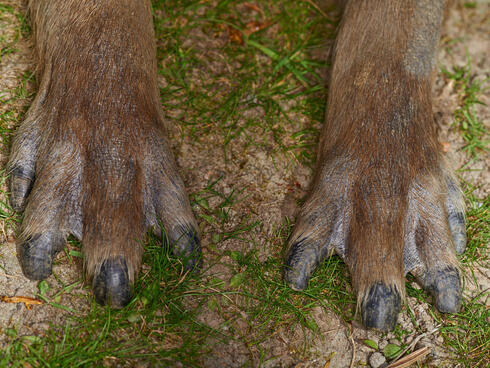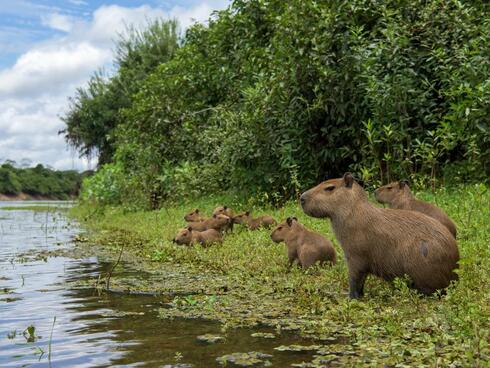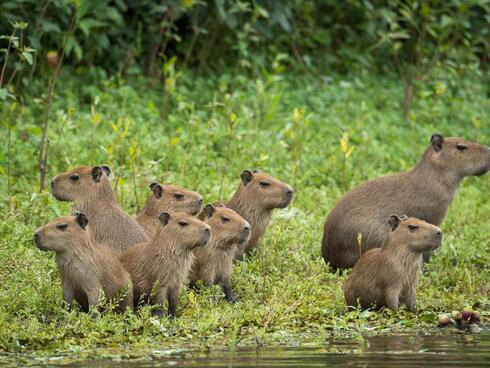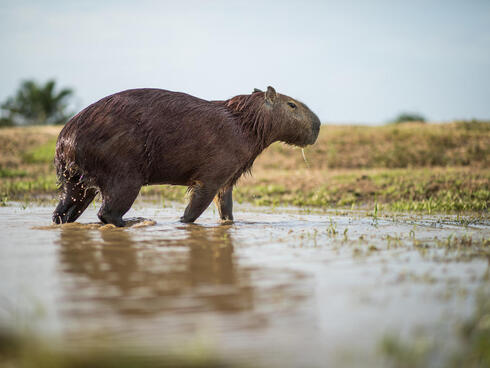1. Are capybaras rodents?
Capybaras are rodents—and big ones. Their average size is around 108 pounds, about the size of a full-grown wolf.
They are the last of many massive grass-eating rodent species that have historically lived in South America.¹
2. Do capybaras live on land?
Capybaras are semi-aquatic, meaning they live partly on land and partly in water. Splitting time between land and water allows them to eat aquatic plants and keep cool.²
Capybaras have webbed feet like frogs and ducks do, helping them to swim fast. Plus, their eyes, ears, and nostrils are on top of their head, which lets them stay mostly submerged for long periods of time. That way, they are hidden from the watchful gaze of predators!

Capybaras have membranes between their toes, helping them swim with ease.

A group of young capybaras along the San Martin River in Bolivia.
3. How do capybaras adapt to the dry and wet seasons?
The nutrients in grasses differ between the dry season and the wet season. That’s no problem for capybaras! During the dry season, when their food is less nutritious, their small intestine grows, helping to absorb more nutrients. In the wet season, their intestine contracts, as nutritious vegetation is bountiful!³ This flexible digestive tract is key to their survival.
4. Why do capybaras eat their own poop?
After waking up in the morning, capybaras often snack on their poop! Digesting their food a second time helps to absorb nutrients that weren’t absorbed the first time.4

Capybara babies, called pups, in Bolivia. Female capybaras have an average of four pups at one time and may give birth up to twice a year.

An adult male capybara in Casanare, Colombia.
5. Why are capybaras an important part of the food chain?
Capybaras’ preferred meal consists of grasses and aquatic plants. And these rodents have to watch out for jaguars and pumas, or else they’ll become a juicy snack themselves!
6. What challenges do capybaras face?
Sadly, humans are cutting down forests and converting wetlands to make way for crop fields and cattle ranches, which destroys capybaras’ natural habitat. Overhunting is also a threat.
By working with people and communities to conserve ecosystems, we can help ensure that capybara populations stay healthy for years to come.